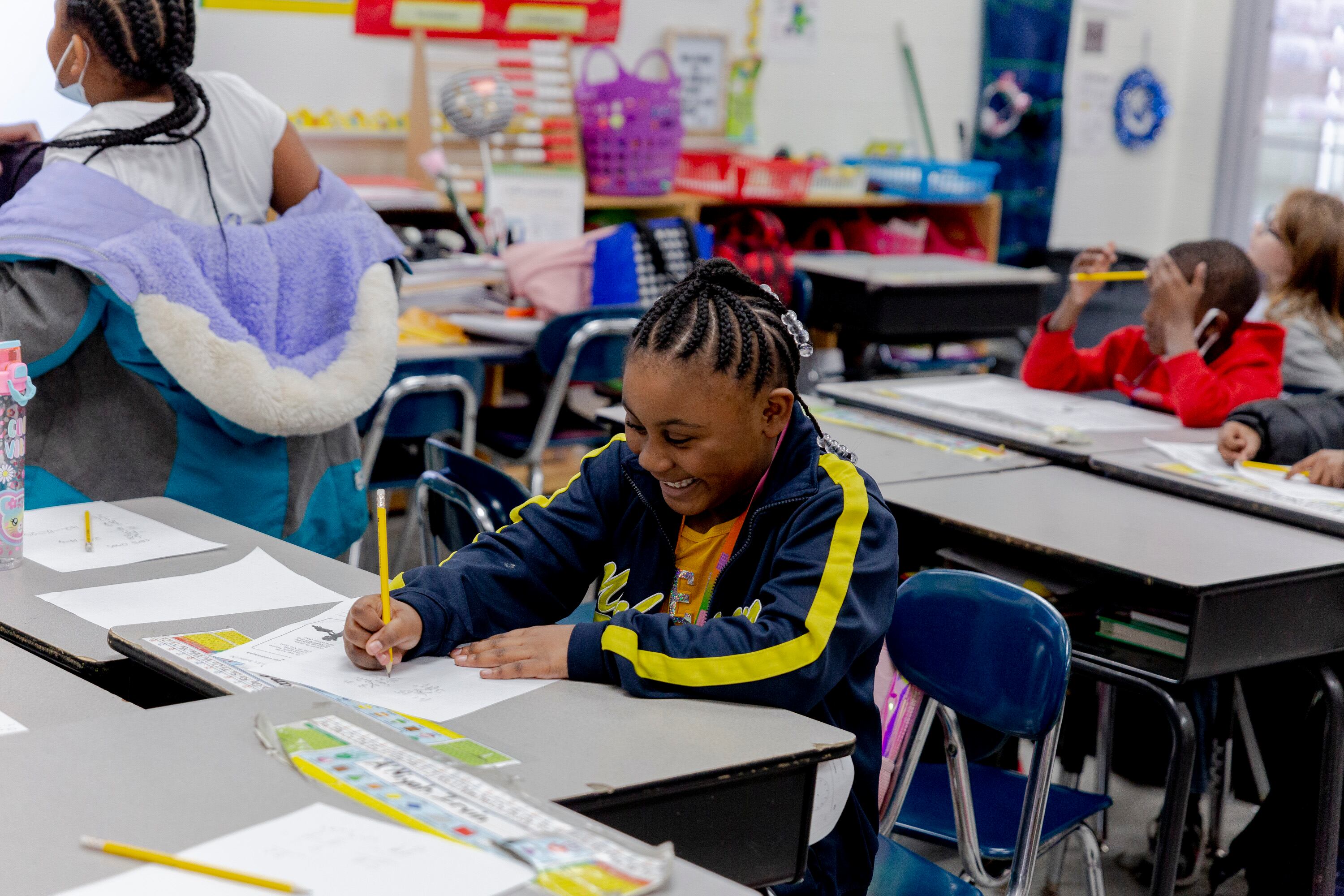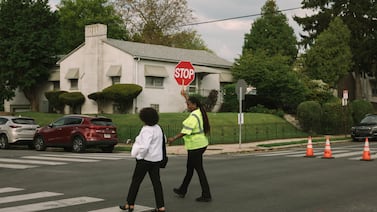Tutoring is one of the most popular strategies for helping students catch up in the wake of the pandemic. But cost, staffing, and scheduling challenges often make it hard for schools to get these programs off the ground.
A sweeping $10 million research effort announced Thursday aims to tackle that problem by studying 31 different tutoring initiatives across the country this school year. The goal is to answer some of the biggest open questions about how schools can put successful tutoring programs in place for more students — and then figure out if they worked.
“It feels like out in the education ecosphere people are sort of yelling at districts and saying: ‘Why aren’t you doing more?’” said Kevin Huffman, the head of Accelerate, a nonprofit that awarded the grants. Districts are trying, he said, but it’s been complicated to staff in-person programs and difficult to vet tutoring services run by outside companies.
The research has the potential to help schools know which tutoring efforts are worth their time and money — before their COVID relief funding runs out.
“I think we’ve delivered the message collectively to the field that tutoring benefits all students, which is true based on the research, but it’s not a useful message when it comes to implementation,” Huffman added. “It’s just too broad and overwhelming, and I think the more we can help people narrow the scope on how to get started, the more likely we are to get traction.”
The research will look at tutoring efforts that are in-person, virtual, and a combination of the two. Accelerate expects some of the research will be available as early as next summer, while other studies will take more time.
Some of the research efforts are large, high-profile initiatives, such as the partnership between Harvard’s Center for Education Policy Research, the American Institutes for Research, and NWEA, which is studying the effects of tutoring and other academic recovery strategies on some 700,000 students across six states. Other studies will look at smaller efforts, like a student-launched virtual tutoring program called Tutor Teens that will partner with four high schools in the Cincinnati area.
Accelerate was launched earlier this year by the nonprofit America Achieves, which initially raised $65 million for the effort from private philanthropy — Arnold Ventures; the head of Citadel, Kenneth C. Griffin; the Bill and Melinda Gates Foundation; and the Overdeck Family Foundation. (Chalkbeat also receives funding from the Gates Foundation.)
The nonprofit received more than 200 interested applicants, and tried to choose initiatives that were different from each other so the research would cover lots of ground. Accelerate also looked for efforts that zeroed in on specific student groups, such as English learners and struggling readers.
Some winners already have a proven track record, while others are start-ups that showed promise, Huffman said. The grants range in size from $100,000 to $800,000.
“A lot of these groups and organizations are taking first stabs at things that will need to be studied more,” Huffman said. “But our hope is that we’re starting down this path where instead of simply asking the question of whether tutoring works, we’re getting at the question of what are practical solutions” for getting that help to many more students.
The programs being studied include:
- Amira Learning, a company that uses artificial intelligence to help students with literacy. The research will look at the effectiveness of pairing Amira’s virtual platform with in-person reading tutoring provided by young adults in California’s Central Valley to struggling elementary schoolers.
- Amplify, a literacy tutoring company. The research will look at how a student’s race, gender, and language can affect the quality of a student-tutor match.
- Deans for Impact, a nonprofit focused on teacher training, which will work with teacher prep programs to train and pair aspiring teachers with students who need tutoring, with a focus on math.
- Guilford County Schools in North Carolina, which has an in-person tutoring program that targets high-need students in math, reading, and science. The research will look at how providing extra support to tutors can affect their relationships with students and student performance.
- Great Oaks Foundation, which will recruit and train young people to be placed in schools for a year to tutor students in math and reading through AmeriCorps.
- Green Dot Public Schools, a charter network in California, which will expand its math tutoring program for middle and early high schoolers and work with the company Saga Education to provide tutors with more feedback on their work.
- Matheka, a math tutoring company, which will recruit and train bilingual tutors from Latin America to provide English learners who speak Spanish with virtual tutoring in elementary school. The research will look at the effects on their math scores.
- OnYourMarkEducation, a virtual literacy tutoring program, will work with the National Student Support Accelerator to conduct randomized control trial studies looking at whether different tutor-to-student ratios affect student performance.
- Reading Partners, a nonprofit that’s been shown to provide effective literacy tutoring, will conduct a randomized control trial of the virtual version of its in-person program.
- Teach for America will look at the effects of its program that uses college students to provide virtual tutoring to elementary schoolers in reading and middle schoolers in math.
- Zearn, a virtual math tutoring company being used by the Tennessee education department to offer tutoring to half the state’s elementary and middle school students, will use preliminary data to look at student outcomes.
Huffman hopes the research will help show whether it’s possible to train high schoolers, parents, college students, and pre-service teachers to effectively tutor students in large numbers. Many schools would prefer to offer tutoring in person, but have faced major challenges finding enough staff locally.
There are a few other trends, too. As more schools look to put programs in place that follow the science of reading, several grantees are looking at the effectiveness of virtual early literacy tutoring.
Other research efforts aim to determine the right balance between in-person and virtual support.
“Broadly, we don’t have a great handle across the country yet on: What happens if you go from in person to Zoom?” Huffman said. “What are the ways that reduce the lift on in-person? Can you find those things without reducing the statistically significant impacts that tutoring in-person shows?”
Kalyn Belsha is a national education reporter based in Chicago. Contact her at kbelsha@chalkbeat.org.






